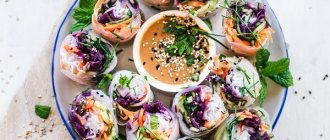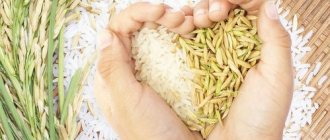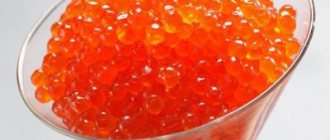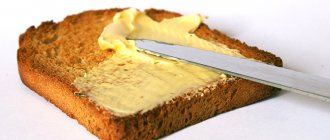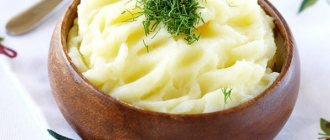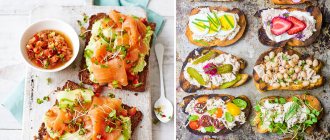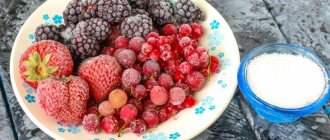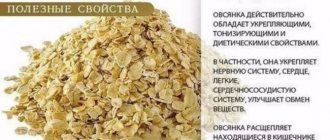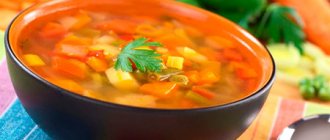Dietary properties:
How many calories are in a sandwich with red fish, what dietary properties it has, all this is of great interest to those who lead a healthy lifestyle and monitor their health and figure. So we will try to answer these questions in the next article.
So here it is:
Red fish is the common name for fish belonging to the salmon family. Nowadays this is the name given to those whose meat has a characteristic red-pink color: pink salmon, chum salmon, salmon, trout. But there were times when in Rus' this was the name given to varieties of fish that had high nutritional qualities, and their meat was not necessarily red-pink. That’s what they called beluga, sterlet, sturgeon, and stellate sturgeon back then.
In this case, the word “red” was used to mean “valuable.” According to another version, the name “red” was used to emphasize the high cost and rarity of the fish. And today it continues to be one of the most favorite delicacies on the holiday table, including in the form of a sandwich.
Recipe Sandwich with butter and red fish. Calorie, chemical composition and nutritional value.
Nutritional value and chemical composition of Butter and Red Fish Sandwich.
The table shows the nutritional content (calories, proteins, fats, carbohydrates, vitamins and minerals) per 100 grams of edible portion.
| Nutrient | Quantity | Norm** | % of the norm in 100 g | % of the norm in 100 kcal | 100% normal |
| Calorie content | 275.5 kcal | 1684 kcal | 16.4% | 6% | 611 g |
| Squirrels | 10.6 g | 76 g | 13.9% | 5% | 717 g |
| Fats | 13.8 g | 56 g | 24.6% | 8.9% | 406 g |
| Carbohydrates | 27.1 g | 219 g | 12.4% | 4.5% | 808 g |
| Organic acids | 0.1 g | ~ | |||
| Alimentary fiber | 1.3 g | 20 g | 6.5% | 2.4% | 1538 g |
| Water | 46.2 g | 2273 g | 2% | 0.7% | 4920 g |
| Ash | 0.805 g | ~ | |||
| Vitamins | |||||
| Vitamin A, RE | 51.6 mcg | 900 mcg | 5.7% | 2.1% | 1744 g |
| Retinol | 0.047 mg | ~ | |||
| beta carotene | 0.035 mg | 5 mg | 0.7% | 0.3% | 14286 g |
| Vitamin B1, thiamine | 0.058 mg | 1.5 mg | 3.9% | 1.4% | 2586 g |
| Vitamin B2, riboflavin | 0.024 mg | 1.8 mg | 1.3% | 0.5% | 7500 g |
| Vitamin B4, choline | 29.38 mg | 500 mg | 5.9% | 2.1% | 1702 g |
| Vitamin B5, pantothenic | 0.162 mg | 5 mg | 3.2% | 1.2% | 3086 g |
| Vitamin B6, pyridoxine | 0.079 mg | 2 mg | 4% | 1.5% | 2532 g |
| Vitamin B9, folates | 14.737 mcg | 400 mcg | 3.7% | 1.3% | 2714 g |
| Vitamin D, calciferol | 0.118 mcg | 10 mcg | 1.2% | 0.4% | 8475 g |
| Vitamin E, alpha tocopherol, TE | 0.974 mg | 15 mg | 6.5% | 2.4% | 1540 g |
| Vitamin H, biotin | 0.968 mcg | 50 mcg | 1.9% | 0.7% | 5165 g |
| Vitamin K, phylloquinone | 0.6 mcg | 120 mcg | 0.5% | 0.2% | 20000 g |
| Vitamin RR, NE | 1.1211 mg | 20 mg | 5.6% | 2% | 1784 g |
| Niacin | 0.474 mg | ~ | |||
| Macronutrients | |||||
| Potassium, K | 49.61 mg | 2500 mg | 2% | 0.7% | 5039 g |
| Calcium, Ca | 10.95 mg | 1000 mg | 1.1% | 0.4% | 9132 g |
| Silicon, Si | 1.158 mg | 30 mg | 3.9% | 1.4% | 2591 g |
| Magnesium, Mg | 6.84 mg | 400 mg | 1.7% | 0.6% | 5848 g |
| Sodium, Na | 225.29 mg | 1300 mg | 17.3% | 6.3% | 577 g |
| Sera, S | 30.92 mg | 1000 mg | 3.1% | 1.1% | 3234 g |
| Phosphorus, P | 35.7 mg | 800 mg | 4.5% | 1.6% | 2241 g |
| Chlorine, Cl | 375.26 mg | 2300 mg | 16.3% | 5.9% | 613 g |
| Microelements | |||||
| Iron, Fe | 0.647 mg | 18 mg | 3.6% | 1.3% | 2782 g |
| Cobalt, Co | 1.053 mcg | 10 mcg | 10.5% | 3.8% | 950 g |
| Manganese, Mn | 0.4408 mg | 2 mg | 22% | 8% | 454 g |
| Copper, Cu | 71.25 mcg | 1000 mcg | 7.1% | 2.6% | 1404 g |
| Molybdenum, Mo | 7.158 mcg | 70 mcg | 10.2% | 3.7% | 978 g |
| Selenium, Se | 0.079 mcg | 55 mcg | 0.1% | 69620 g | |
| Fluorine, F | 0.22 mcg | 4000 mcg | 1818182 g | ||
| Chromium, Cr | 1.16 mcg | 50 mcg | 2.3% | 0.8% | 4310 g |
| Zinc, Zn | 0.3995 mg | 12 mg | 3.3% | 1.2% | 3004 g |
| Digestible carbohydrates | |||||
| Starch and dextrins | 25.526 g | ~ | |||
| Mono- and disaccharides (sugars) | 1.6 g | max 100 g | |||
| Essential amino acids | |||||
| Arginine* | 0.002 g | ~ | |||
| Valin | 0.002 g | ~ | |||
| Histidine* | 0.002 g | ~ | |||
| Isoleucine | 0.002 g | ~ | |||
| Leucine | 0.004 g | ~ | |||
| Lysine | 0.002 g | ~ | |||
| Methionine | 0.001 g | ~ | |||
| Methionine + Cysteine | 0.002 g | ~ | |||
| Threonine | 0.002 g | ~ | |||
| Tryptophan | 0.002 g | ~ | |||
| Phenylalanine | 0.002 g | ~ | |||
| Phenylalanine+Tyrosine | 0.004 g | ~ | |||
| Nonessential amino acids | |||||
| Alanin | 0.002 g | ~ | |||
| Aspartic acid | 0.003 g | ~ | |||
| Glycine | 0.002 g | ~ | |||
| Glutamic acid | 0.007 g | ~ | |||
| Proline | 0.002 g | ~ | |||
| Serin | 0.002 g | ~ | |||
| Tyrosine | 0.002 g | ~ | |||
| Cysteine | 0.001 g | ~ | |||
| Sterols (sterols) | |||||
| Cholesterol | 15 mg | max 300 mg | |||
| Saturated fatty acids | |||||
| Saturated fatty acids | 4.5 g | max 18.7 g | |||
| 4:0 Oil | 0.295 g | ~ | |||
| 6:0 Kapronovaya | 0.066 g | ~ | |||
| 8:0 Caprylic | 0.057 g | ~ | |||
| 10:0 Kaprinovaya | 0.149 g | ~ | |||
| 12:0 Lauric | 0.191 g | ~ | |||
| 14:0 Miristinovaya | 0.618 g | ~ | |||
| 16:0 Palmitinaya | 1.943 g | ~ | |||
| 18:0 Stearic | 0.594 g | ~ | |||
| Monounsaturated fatty acids | 2.115 g | min 16.8 g | 12.6% | 4.6% | |
| 14:1 Myristoleic | 0.066 g | ~ | |||
| 16:1 Palmitoleic | 0.226 g | ~ | |||
| 18:1 Oleic (omega-9) | 1.794 g | ~ | |||
| Polyunsaturated fatty acids | 0.197 g | from 11.2 to 20.6 g | 1.8% | 0.7% | |
| 18:2 Linolevaya | 0.066 g | ~ | |||
| 18:3 Linolenic | 0.006 g | ~ | |||
| Omega-6 fatty acids | 0.1 g | from 4.7 to 16.8 g | 2.1% | 0.8% |
The energy value of a sandwich with butter and red fish is 275.5 kcal.
- Serving = 38 g (104.7 kcal)
Primary Source: Created in the application by the user. Read more.
** This table shows the average levels of vitamins and minerals for an adult. If you want to know the norms taking into account your gender, age and other factors, then use the “My Healthy Diet” application.
Recipe Sandwich with butter and salmon. Calorie, chemical composition and nutritional value.
Nutritional value and chemical composition of “Butter and Salmon Sandwich.”
The table shows the nutritional content (calories, proteins, fats, carbohydrates, vitamins and minerals) per 100 grams of edible portion.
| Nutrient | Quantity | Norm** | % of the norm in 100 g | % of the norm in 100 kcal | 100% normal |
| Calorie content | 281.7 kcal | 1684 kcal | 16.7% | 5.9% | 598 g |
| Squirrels | 13 g | 76 g | 17.1% | 6.1% | 585 g |
| Fats | 14.9 g | 56 g | 26.6% | 9.4% | 376 g |
| Carbohydrates | 24.1 g | 219 g | 11% | 3.9% | 909 g |
| Organic acids | 0.1 g | ~ | |||
| Alimentary fiber | 1.2 g | 20 g | 6% | 2.1% | 1667 g |
| Water | 42.4 g | 2273 g | 1.9% | 0.7% | 5361 g |
| Ash | 4.419 g | ~ | |||
| Vitamins | |||||
| Vitamin A, RE | 64.9 mcg | 900 mcg | 7.2% | 2.6% | 1387 g |
| Retinol | 0.059 mg | ~ | |||
| beta carotene | 0.04 mg | 5 mg | 0.8% | 0.3% | 12500 g |
| Vitamin B1, thiamine | 0.115 mg | 1.5 mg | 7.7% | 2.7% | 1304 g |
| Vitamin B2, riboflavin | 0.11 mg | 1.8 mg | 6.1% | 2.2% | 1636 g |
| Vitamin B4, choline | 27.14 mg | 500 mg | 5.4% | 1.9% | 1842 |
| Vitamin B5, pantothenic | 0.815 mg | 5 mg | 16.3% | 5.8% | 613 g |
| Vitamin B6, pyridoxine | 0.405 mg | 2 mg | 20.3% | 7.2% | 494 g |
| Vitamin B9, folates | 23.488 mcg | 400 mcg | 5.9% | 2.1% | 1703 g |
| Vitamin B12, cobalamin | 1.276 mcg | 3 mcg | 42.5% | 15.1% | 235 g |
| Vitamin C, ascorbic acid | 0.42 mg | 90 mg | 0.5% | 0.2% | 21429 g |
| Vitamin D, calciferol | 4.421 mcg | 10 mcg | 44.2% | 15.7% | 226 g |
| Vitamin E, alpha tocopherol, TE | 1.953 mg | 15 mg | 13% | 4.6% | 768 g |
| Vitamin H, biotin | 0.856 mcg | 50 mcg | 1.7% | 0.6% | 5841 g |
| Vitamin K, phylloquinone | 1 mcg | 120 mcg | 0.8% | 0.3% | 12000 g |
| Vitamin RR, NE | 5.186 mg | 20 mg | 25.9% | 9.2% | 386 g |
| Niacin | 3.026 mg | ~ | |||
| Macronutrients | |||||
| Potassium, K | 138.33 mg | 2500 mg | 5.5% | 2% | 1807 |
| Calcium, Ca | 28.37 mg | 1000 mg | 2.8% | 1% | 3525 g |
| Silicon, Si | 1.023 mg | 30 mg | 3.4% | 1.2% | 2933 g |
| Magnesium, Mg | 31.22 mg | 400 mg | 7.8% | 2.8% | 1281 g |
| Sodium, Na | 1488.37 mg | 1300 mg | 114.5% | 40.6% | 87 g |
| Sera, S | 122.09 mg | 1000 mg | 12.2% | 4.3% | 819 g |
| Phosphorus, P | 135.4 mg | 800 mg | 16.9% | 6% | 591 g |
| Chlorine, Cl | 2205.72 mg | 2300 mg | 95.9% | 34% | 104 g |
| Microelements | |||||
| Iron, Fe | 1.628 mg | 18 mg | 9% | 3.2% | 1106 g |
| Yod, I | 20.93 mcg | 150 mcg | 14% | 5% | 717 g |
| Cobalt, Co | 9.302 mcg | 10 mcg | 93% | 33% | 108 g |
| Manganese, Mn | 0.4107 mg | 2 mg | 20.5% | 7.3% | 487 g |
| Copper, Cu | 168.14 mcg | 1000 mcg | 16.8% | 6% | 595 g |
| Molybdenum, Mo | 8 mcg | 70 mcg | 11.4% | 4% | 875 g |
| Nickel, Ni | 2.512 mcg | ~ | |||
| Selenium, Se | 15.395 mcg | 55 mcg | 28% | 9.9% | 357 g |
| Fluorine, F | 180.33 mcg | 4000 mcg | 4.5% | 1.6% | 2218 g |
| Chromium, Cr | 24.05 mcg | 50 mcg | 48.1% | 17.1% | 208 g |
| Zinc, Zn | 0.6565 mg | 12 mg | 5.5% | 2% | 1828 |
| Digestible carbohydrates | |||||
| Starch and dextrins | 22.558 g | ~ | |||
| Mono- and disaccharides (sugars) | 1.5 g | max 100 g | |||
| Sterols (sterols) | |||||
| Cholesterol | 64.4 mg | max 300 mg | |||
| Saturated fatty acids | |||||
| Saturated fatty acids | 6.6 g | max 18.7 g | |||
| Monounsaturated fatty acids | 4.302 g | min 16.8 g | 25.6% | 9.1% | |
| Polyunsaturated fatty acids | 2.383 g | from 11.2 to 20.6 g | 21.3% | 7.6% | |
| Omega-3 fatty acids | 1.7 g | from 0.9 to 3.7 g | 100% | 35.5% | |
| Omega-6 fatty acids | 0.5 g | from 4.7 to 16.8 g | 10.6% | 3.8% |
The energy value of a sandwich with butter and salmon is 281.7 kcal.
Primary Source: Created in the application by the user. Read more.
** This table shows the average levels of vitamins and minerals for an adult. If you want to know the norms taking into account your gender, age and other factors, then use the “My Healthy Diet” application.
Recipe Salmon Sandwich 1 pc. 55 g. Calorie content, chemical composition and nutritional value.
Nutritional value and chemical composition “Salmon sandwich 1 pc. 55 g."
The table shows the nutritional content (calories, proteins, fats, carbohydrates, vitamins and minerals) per 100 grams of edible portion.
| Nutrient | Quantity | Norm** | % of the norm in 100 g | % of the norm in 100 kcal | 100% normal |
| Calorie content | 290.9 kcal | 1684 kcal | 17.3% | 5.9% | 579 g |
| Squirrels | 14.2 g | 76 g | 18.7% | 6.4% | 535 g |
| Fats | 18.6 g | 56 g | 33.2% | 11.4% | 301 g |
| Carbohydrates | 16.5 g | 219 g | 7.5% | 2.6% | 1327 g |
| Organic acids | 0.1 g | ~ | |||
| Alimentary fiber | 2.2 g | 20 g | 11% | 3.8% | 909 g |
| Water | 43.5 g | 2273 g | 1.9% | 0.7% | 5225 g |
| Ash | 4.747 g | ~ | |||
| Vitamins | |||||
| Vitamin A, RE | 109.9 mcg | 900 mcg | 12.2% | 4.2% | 819 g |
| Retinol | 0.101 mg | ~ | |||
| beta carotene | 0.056 mg | 5 mg | 1.1% | 0.4% | 8929 g |
| Vitamin B1, thiamine | 0.154 mg | 1.5 mg | 10.3% | 3.5% | 974 g |
| Vitamin B2, riboflavin | 0.145 mg | 1.8 mg | 8.1% | 2.8% | 1241 g |
| Vitamin B4, choline | 24.92 mg | 500 mg | 5% | 1.7% | 2006 |
| Vitamin B5, pantothenic | 1.04 mg | 5 mg | 20.8% | 7.2% | 481 g |
| Vitamin B6, pyridoxine | 0.502 mg | 2 mg | 25.1% | 8.6% | 398 g |
| Vitamin B9, folates | 23.182 mcg | 400 mcg | 5.8% | 2% | 1725 g |
| Vitamin B12, cobalamin | 1.473 mcg | 3 mcg | 49.1% | 16.9% | 204 g |
| Vitamin D, calciferol | 0.218 mcg | 10 mcg | 2.2% | 0.8% | 4587 g |
| Vitamin E, alpha tocopherol, TE | 2.136 mg | 15 mg | 14.2% | 4.9% | 702 g |
| Vitamin H, biotin | 1.745 mcg | 50 mcg | 3.5% | 1.2% | 2865 g |
| Vitamin K, phylloquinone | 1 mcg | 120 mcg | 0.8% | 0.3% | 12000 g |
| Vitamin RR, NE | 6.6109 mg | 20 mg | 33.1% | 11.4% | 303 g |
| Niacin | 4.135 mg | ~ | |||
| Macronutrients | |||||
| Potassium, K | 181.95 mg | 2500 mg | 7.3% | 2.5% | 1374 g |
| Calcium, Ca | 33.75 mg | 1000 mg | 3.4% | 1.2% | 2963 g |
| Silicon, Si | 2.945 mg | 30 mg | 9.8% | 3.4% | 1019 g |
| Magnesium, Mg | 49.45 mg | 400 mg | 12.4% | 4.3% | 809 g |
| Sodium, Na | 1540.11 mg | 1300 mg | 118.5% | 40.7% | 84 g |
| Sera, S | 133 mg | 1000 mg | 13.3% | 4.6% | 752 g |
| Phosphorus, P | 194.4 mg | 800 mg | 24.3% | 8.4% | 412 g |
| Chlorine, Cl | 2517.8 mg | 2300 mg | 109.5% | 37.6% | 91 g |
| Microelements | |||||
| Bor, B | 22.2 mcg | ~ | |||
| Vanadium, V | 36.36 mcg | ~ | |||
| Iron, Fe | 2.42 mg | 18 mg | 13.4% | 4.6% | 744 g |
| Yod, I | 26.47 mcg | 150 mcg | 17.6% | 6.1% | 567 g |
| Cobalt, Co | 11.2 mcg | 10 mcg | 112% | 38.5% | 89 g |
| Manganese, Mn | 0.9667 mg | 2 mg | 48.3% | 16.6% | 207 g |
| Copper, Cu | 240.91 mcg | 1000 mcg | 24.1% | 8.3% | 415 g |
| Molybdenum, Mo | 8.509 mcg | 70 mcg | 12.2% | 4.2% | 823 g |
| Nickel, Ni | 2.945 mcg | ~ | |||
| Selenium, Se | 20.245 mcg | 55 mcg | 36.8% | 12.7% | 272 g |
| Fluorine, F | 233.32 mcg | 4000 mcg | 5.8% | 2% | 1714 g |
| Chromium, Cr | 28.35 mcg | 50 mcg | 56.7% | 19.5% | 176 g |
| Zinc, Zn | 1.0491 mg | 12 mg | 8.7% | 3% | 1144 g |
| Digestible carbohydrates | |||||
| Starch and dextrins | 15.636 g | ~ | |||
| Mono- and disaccharides (sugars) | 0.9 g | max 100 g | |||
| Essential amino acids | |||||
| Arginine* | 0.003 g | ~ | |||
| Valin | 0.004 g | ~ | |||
| Histidine* | 0.003 g | ~ | |||
| Isoleucine | 0.004 g | ~ | |||
| Leucine | 0.007 g | ~ | |||
| Lysine | 0.004 g | ~ | |||
| Methionine | 0.001 g | ~ | |||
| Methionine + Cysteine | 0.003 g | ~ | |||
| Threonine | 0.004 g | ~ | |||
| Tryptophan | 0.004 g | ~ | |||
| Phenylalanine | 0.004 g | ~ | |||
| Phenylalanine+Tyrosine | 0.007 g | ~ | |||
| Nonessential amino acids | |||||
| Alanin | 0.003 g | ~ | |||
| Aspartic acid | 0.006 g | ~ | |||
| Glycine | 0.003 g | ~ | |||
| Glutamic acid | 0.013 g | ~ | |||
| Proline | 0.004 g | ~ | |||
| Serin | 0.004 g | ~ | |||
| Tyrosine | 0.004 g | ~ | |||
| Cysteine | 0.001 g | ~ | |||
| Sterols (sterols) | |||||
| Cholesterol | 80.65 mg | max 300 mg | |||
| Saturated fatty acids | |||||
| Saturated fatty acids | 9 g | max 18.7 g | |||
| 4:0 Oil | 0.544 g | ~ | |||
| 6:0 Kapronovaya | 0.121 g | ~ | |||
| 8:0 Caprylic | 0.105 g | ~ | |||
| 10:0 Kaprinovaya | 0.275 g | ~ | |||
| 12:0 Lauric | 0.352 g | ~ | |||
| 14:0 Miristinovaya | 1.139 g | ~ | |||
| 16:0 Palmitinaya | 3.58 g | ~ | |||
| 18:0 Stearic | 1.094 g | ~ | |||
| Monounsaturated fatty acids | 5.934 g | min 16.8 g | 35.3% | 12.1% | |
| 14:1 Myristoleic | 0.122 g | ~ | |||
| 16:1 Palmitoleic | 0.416 g | ~ | |||
| 18:1 Oleic (omega-9) | 3.306 g | ~ | |||
| Polyunsaturated fatty acids | 2.872 g | from 11.2 to 20.6 g | 25.6% | 8.8% | |
| 18:2 Linolevaya | 0.122 g | ~ | |||
| 18:3 Linolenic | 0.01 g | ~ | |||
| Omega-3 fatty acids | 2 g | from 0.9 to 3.7 g | 100% | 34.4% | |
| Omega-6 fatty acids | 0.5 g | from 4.7 to 16.8 g | 10.6% | 3.6% |
Energy value Salmon sandwich 1 pc. 55 g is 290.9 kcal.
Primary Source: Created in the application by the user. Read more.
** This table shows the average levels of vitamins and minerals for an adult. If you want to know the norms taking into account your gender, age and other factors, then use the “My Healthy Diet” application.
Recipe Sandwich with red fish and butter 40g. Calorie, chemical composition and nutritional value.
Nutritional value and chemical composition of “Sandwich with red fish and butter 40g.”
The table shows the nutritional content (calories, proteins, fats, carbohydrates, vitamins and minerals) per 100 grams of edible portion.
| Nutrient | Quantity | Norm** | % of the norm in 100 g | % of the norm in 100 kcal | 100% normal |
| Calorie content | 291.9 kcal | 1684 kcal | 17.3% | 5.9% | 577 g |
| Squirrels | 10 g | 76 g | 13.2% | 4.5% | 760 g |
| Fats | 13.6 g | 56 g | 24.3% | 8.3% | 412 g |
| Carbohydrates | 32.2 g | 219 g | 14.7% | 5% | 680 g |
| Organic acids | 0.1 g | ~ | |||
| Alimentary fiber | 1.6 g | 20 g | 8% | 2.7% | 1250 g |
| Water | 23.3 g | 2273 g | 1% | 0.3% | 9755 g |
| Ash | 0.963 g | ~ | |||
| Vitamins | |||||
| Vitamin A, RE | 81.6 mcg | 900 mcg | 9.1% | 3.1% | 1103 g |
| Retinol | 0.074 mg | ~ | |||
| beta carotene | 0.054 mg | 5 mg | 1.1% | 0.4% | 9259 g |
| Vitamin B1, thiamine | 0.069 mg | 1.5 mg | 4.6% | 1.6% | 2174 g |
| Vitamin B2, riboflavin | 0.031 mg | 1.8 mg | 1.7% | 0.6% | 5806 g |
| Vitamin B4, choline | 35.48 mg | 500 mg | 7.1% | 2.4% | 1409 g |
| Vitamin B5, pantothenic | 0.194 mg | 5 mg | 3.9% | 1.3% | 2577 g |
| Vitamin B6, pyridoxine | 0.094 mg | 2 mg | 4.7% | 1.6% | 2128 g |
| Vitamin B9, folates | 17.5 mcg | 400 mcg | 4.4% | 1.5% | 2286 g |
| Vitamin D, calciferol | 0.188 mcg | 10 mcg | 1.9% | 0.7% | 5319 g |
| Vitamin E, alpha tocopherol, TE | 1.188 mg | 15 mg | 7.9% | 2.7% | 1263 g |
| Vitamin H, biotin | 1.15 mcg | 50 mcg | 2.3% | 0.8% | 4348 g |
| Vitamin K, phylloquinone | 0.9 mcg | 120 mcg | 0.8% | 0.3% | 13333 g |
| Vitamin RR, NE | 1.3375 mg | 20 mg | 6.7% | 2.3% | 1495 g |
| Niacin | 0.563 mg | ~ | |||
| Macronutrients | |||||
| Potassium, K | 59.38 mg | 2500 mg | 2.4% | 0.8% | 4210 g |
| Calcium, Ca | 13.37 mg | 1000 mg | 1.3% | 0.4% | 7479 g |
| Silicon, Si | 1.375 mg | 30 mg | 4.6% | 1.6% | 2182 g |
| Magnesium, Mg | 8.13 mg | 400 mg | 2% | 0.7% | 4920 g |
| Sodium, Na | 267.75 mg | 1300 mg | 20.6% | 7.1% | 486 g |
| Sera, S | 36.88 mg | 1000 mg | 3.7% | 1.3% | 2711 g |
| Phosphorus, P | 43 mg | 800 mg | 5.4% | 1.8% | 1860 |
| Chlorine, Cl | 445.63 mg | 2300 mg | 19.4% | 6.6% | 516 g |
| Microelements | |||||
| Iron, Fe | 0.775 mg | 18 mg | 4.3% | 1.5% | 2323 g |
| Cobalt, Co | 1.25 mcg | 10 mcg | 12.5% | 4.3% | 800 g |
| Manganese, Mn | 0.5232 mg | 2 mg | 26.2% | 9% | 382 g |
| Copper, Cu | 84.69 mcg | 1000 mcg | 8.5% | 2.9% | 1181 g |
| Molybdenum, Mo | 8.5 mcg | 70 mcg | 12.1% | 4.1% | 824 g |
| Selenium, Se | 0.125 mcg | 55 mcg | 0.2% | 0.1% | 44000 g |
| Fluorine, F | 0.35 mcg | 4000 mcg | 1142857 g | ||
| Chromium, Cr | 1.38 mcg | 50 mcg | 2.8% | 1% | 3623 g |
| Zinc, Zn | 0.4775 mg | 12 mg | 4% | 1.4% | 2513 g |
| Digestible carbohydrates | |||||
| Starch and dextrins | 30.312 g | ~ | |||
| Mono- and disaccharides (sugars) | 1.9 g | max 100 g | |||
| Essential amino acids | |||||
| Arginine* | 0.003 g | ~ | |||
| Valin | 0.004 g | ~ | |||
| Histidine* | 0.003 g | ~ | |||
| Isoleucine | 0.004 g | ~ | |||
| Leucine | 0.006 g | ~ | |||
| Lysine | 0.004 g | ~ | |||
| Methionine | 0.001 g | ~ | |||
| Methionine + Cysteine | 0.003 g | ~ | |||
| Threonine | 0.004 g | ~ | |||
| Tryptophan | 0.004 g | ~ | |||
| Phenylalanine | 0.004 g | ~ | |||
| Phenylalanine+Tyrosine | 0.006 g | ~ | |||
| Nonessential amino acids | |||||
| Alanin | 0.003 g | ~ | |||
| Aspartic acid | 0.005 g | ~ | |||
| Glycine | 0.003 g | ~ | |||
| Glutamic acid | 0.011 g | ~ | |||
| Proline | 0.004 g | ~ | |||
| Serin | 0.004 g | ~ | |||
| Tyrosine | 0.004 g | ~ | |||
| Cysteine | 0.001 g | ~ | |||
| Sterols (sterols) | |||||
| Cholesterol | 23.75 mg | max 300 mg | |||
| Saturated fatty acids | |||||
| Saturated fatty acids | 7 g | max 18.7 g | |||
| 4:0 Oil | 0.468 g | ~ | |||
| 6:0 Kapronovaya | 0.104 g | ~ | |||
| 8:0 Caprylic | 0.09 g | ~ | |||
| 10:0 Kaprinovaya | 0.236 g | ~ | |||
| 12:0 Lauric | 0.303 g | ~ | |||
| 14:0 Miristinovaya | 0.979 g | ~ | |||
| 16:0 Palmitinaya | 3.076 g | ~ | |||
| 18:0 Stearic | 0.94 g | ~ | |||
| Monounsaturated fatty acids | 3.349 g | min 16.8 g | 19.9% | 6.8% | |
| 14:1 Myristoleic | 0.105 g | ~ | |||
| 16:1 Palmitoleic | 0.358 g | ~ | |||
| 18:1 Oleic (omega-9) | 2.841 g | ~ | |||
| Polyunsaturated fatty acids | 0.313 g | from 11.2 to 20.6 g | 2.8% | 1% | |
| 18:2 Linolevaya | 0.105 g | ~ | |||
| 18:3 Linolenic | 0.009 g | ~ | |||
| Omega-6 fatty acids | 0.1 g | from 4.7 to 16.8 g | 2.1% | 0.7% |
Recipe Sandwich with red fish and butter. Calorie, chemical composition and nutritional value.
Sandwich with red fish and butter is rich in vitamins and minerals such as: vitamin B5 - 15.1%, vitamin B6 - 18.8%, vitamin B12 - 47.1%, vitamin D - 48.9%, vitamin PP - 23 .6%, phosphorus - 14.4%, chlorine - 91.6%, iodine - 15.7%, cobalt - 94.1%, copper - 11.8%, selenium - 31.3%, chromium - 51, 8 %
- Vitamin B5 is involved in protein, fat, carbohydrate metabolism, cholesterol metabolism, the synthesis of a number of hormones, hemoglobin, promotes the absorption of amino acids and sugars in the intestines, and supports the function of the adrenal cortex. A lack of pantothenic acid can lead to damage to the skin and mucous membranes.
- Vitamin B6 is involved in maintaining the immune response, processes of inhibition and excitation in the central nervous system, in the transformation of amino acids, the metabolism of tryptophan, lipids and nucleic acids, promotes the normal formation of red blood cells, and maintaining normal levels of homocysteine in the blood. Insufficient intake of vitamin B6 is accompanied by decreased appetite, impaired skin condition, and the development of homocysteinemia and anemia.
- Vitamin B12 plays an important role in the metabolism and transformation of amino acids. Folate and vitamin B12 are interconnected vitamins that are involved in hematopoiesis. A lack of vitamin B12 leads to the development of partial or secondary folate deficiency, as well as anemia, leukopenia, and thrombocytopenia.
- Vitamin D maintains calcium and phosphorus homeostasis and carries out the processes of bone tissue mineralization. A lack of vitamin D leads to impaired metabolism of calcium and phosphorus in the bones, increased demineralization of bone tissue, which leads to an increased risk of developing osteoporosis.
- Vitamin PP is involved in redox reactions of energy metabolism. Insufficient vitamin intake is accompanied by disruption of the normal condition of the skin, gastrointestinal tract and nervous system.
- Phosphorus takes part in many physiological processes, including energy metabolism, regulates acid-base balance, is part of phospholipids, nucleotides and nucleic acids, and is necessary for the mineralization of bones and teeth. Deficiency leads to anorexia, anemia, and rickets.
- Chlorine is necessary for the formation and secretion of hydrochloric acid in the body.
- Iodine is involved in the functioning of the thyroid gland, ensuring the formation of hormones (thyroxine and triiodothyronine). Necessary for the growth and differentiation of cells of all tissues of the human body, mitochondrial respiration, regulation of transmembrane transport of sodium and hormones. Insufficient intake leads to endemic goiter with hypothyroidism and slowing of metabolism, arterial hypotension, stunted growth and mental development in children.
- Cobalt is part of vitamin B12. Activates enzymes of fatty acid metabolism and folic acid metabolism.
- Copper is part of enzymes that have redox activity and are involved in the metabolism of iron, stimulates the absorption of proteins and carbohydrates. Participates in the processes of providing oxygen to the tissues of the human body. Deficiency is manifested by disturbances in the formation of the cardiovascular system and skeleton, and the development of connective tissue dysplasia.
- Selenium is an essential element of the antioxidant defense system of the human body, has an immunomodulatory effect, and is involved in the regulation of the action of thyroid hormones. Deficiency leads to Kashin-Beck disease (osteoarthritis with multiple deformities of the joints, spine and limbs), Keshan disease (endemic myocardiopathy), and hereditary thrombasthenia.
- Chromium is involved in the regulation of blood glucose levels, enhancing the effect of insulin. Deficiency leads to decreased glucose tolerance.
